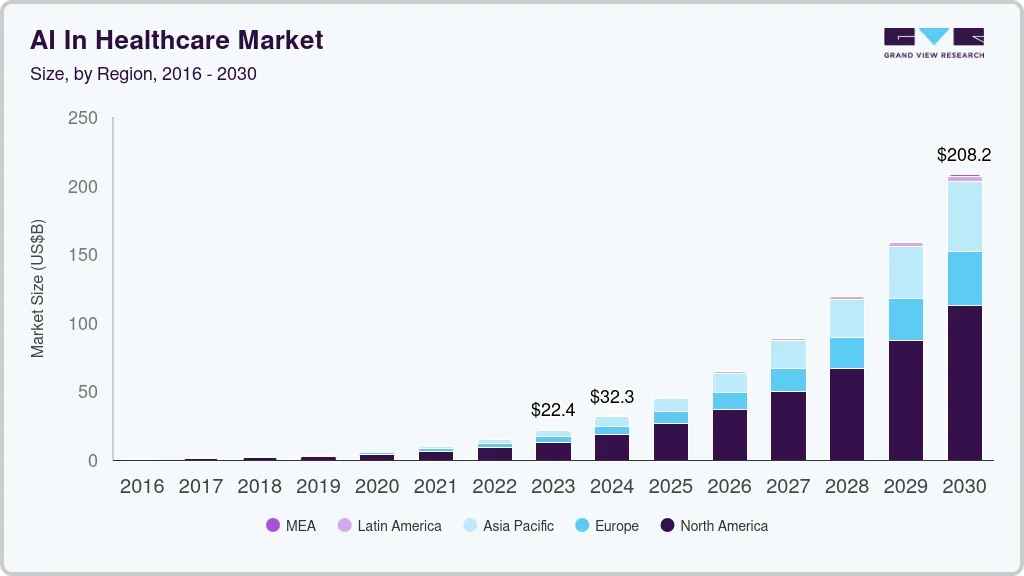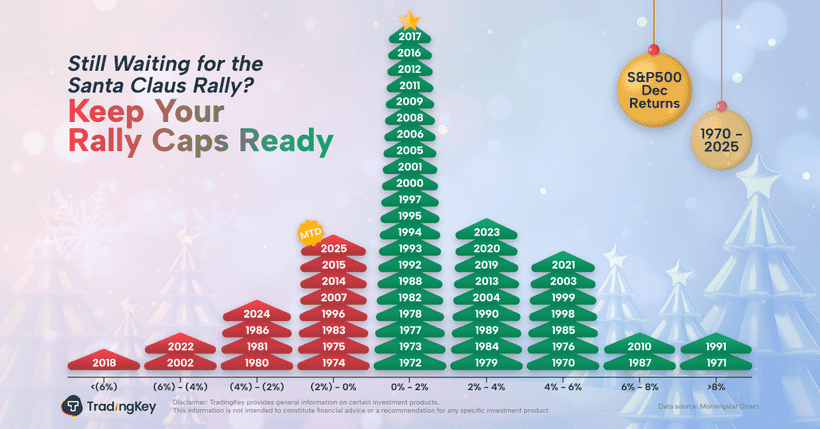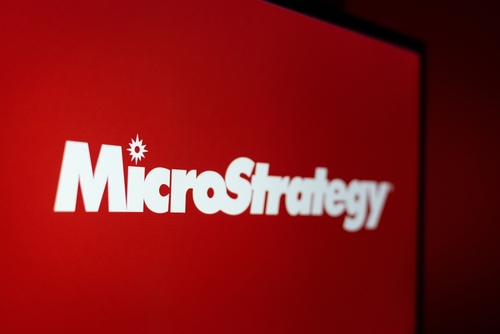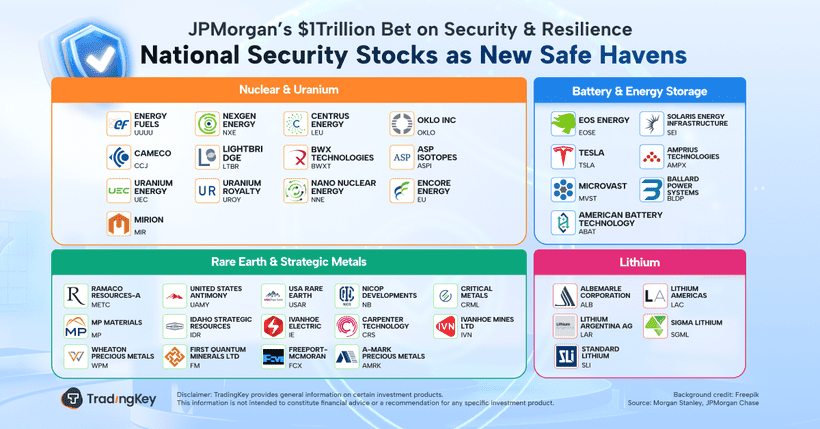Investing in Health AI

- The healthcare AI market is projected to reach several hundred billion dollars by 2030, fueled by aging populations and digitalization.
- Winning companies will combine clinically proven outcomes with scalable models, strong data moats, and strategic health system partnerships.
- Investment opportunities span public equities with established revenue traction to high-upside private startups in diagnostics, drug discovery, and virtual care.
- Key risks include stringent regulation, data security concerns, and valuations outpacing fundamentals, requiring careful due diligence.
Artificial intelligence is no longer a futuristic concept in healthcare, it's quickly becoming one of the most disruptive forces in the industry. From diagnostics to drug discovery, AI is transforming how healthcare is delivered, managed, and personalized. For investors, this shift signals the emergence of a long-term secular trend that combines high-impact innovation with scalable business models.
Emergence of Health AI as a Megatrend of the Globe
Healthcare AI market continues its meteoric ascent. Industry projections suggest several fold growth within the next decade, with market size projections to span several hundred billion dollars by 2030. It's not hype, it's a growing interest for better, cheaper, and more affordable care. Governments, hospitals, and medical technology companies bet big on the AI products capable of workflow automation, speeding up diagnosis, and reducing medical error.
Tailwinds are robust. Aging populations, overstretched health infrastructure, and the worldwide drive to digitalization provided fertile soil where AI adoption has taken hold. Concurrently, developments in generative as well as machine learning enabled the processing of large medical datasets with heretofore unparalleled accuracy. In the field of radiology, pathology, as well as patient engagement, AI continues to be implemented across all phases of the delivery of patient care.

Source: https://www.grandviewresearch.com
From Clinical Algorithms to Scalable Companies
Now that AI is finding a place further within the healthcare ecosystem, old niches find institutional interest. These aren't future moonshots but mature businesses with actual revenue, explosive growth of users, and technology becoming even more defensible. The difference between the winners and the hype is to demonstrate clinically verifiable outcomes while scaling efficiently.
Several companies started to differentiate. Some aim to apply AI to reading imaging or making diagnoses automatically, while others build out virtual care systems delivering physical therapy or tracking chronic conditions with AI. Others build highly advanced drug discovery systems capable of simulating thousands of chemical interactions, shortening R&D cycles by orders of magnitude.
The market remains young, but the trajectory is real. Businesses that construct sturdy data moats, obtain regulatory clearances, and form partnerships with large health systems will be most likely to succeed in this fast-changing landscape.
Navigating the Public and Private Investing Landscape
There is a set of entrance points for investors to get into health AI. Public equities offer exposure to mature commercial traction firms. Some of the newer companies, while being new entrants, already have solid revenue growth along with satisfactory relative performance. While profitability has been trailing behind in some cases, these firms do have sticky customer relationships along with multi-year contracts to back sustainable growth.
Startups dealing with AI-based diagnostics, personalized medicine, and remote caregiving are raising money rapidly. Most of them are being backed by large pharma, technology giants, or venture firms, institutional ones among them. Even though these pre-revenue plays come with more risk, the reward is exposure to some of the newest innovations being developed in the space of caregiving today.
For investors looking for a compromise between growth and risk, it makes sense to follow what's known as a barbell strategy, putting an investment in public companies with real earnings traction alongside selectively invested private startups, with disproportionate upside potential.
Risks in a High-Growth Industry
While the potential of AI in healthcare is high, the sector is not without danger. Regulatory pressure is steep. The solutions for AI need to pass stringent validation processes before being cleared for clinical application, particularly for locations such as the U.S. and Europe. Data security continues to be a prime issue, especially when algorithms come into contact with confidential patient information. And as with all new technologies, there is the potential for hype over reality.
It's also possible that valuations get ahead of fundamentals. While excitement accumulates around AI in general, firms could raise funds with less reliance on numbers than story. That requires due diligence, the sort looking beyond the technology, into the team's capability to deliver, the direction under regulation, and real-world efficacy of the platform.
Despite all the challenges, however, the general trend remains clear: healthcare AI gains momentum not so much because it's technological latest-and-greatest, but because it gets actual tasks accomplished, reducing time, increasing accuracy, reducing expenses.
Why the Next Ten Years Could Be Defining
We are heading into a decade when healthcare will become ever-more characterized by its interaction with smart systems. AI will not substitute physicians but become an honored co-pilot, enabling them, over time, to make speedier, better-informed decisions. As health systems become accustomed to this transition, interest in AI-native infrastructure will grow. Businesses building and operating the instruments making this transition possible will be rewarded with steady, long-term tailwinds.
From the perspective of investors, this is an opportunity to get into a rare confluence of innovation and impact. The healthcare boom of AI is still in its first few innings, but those investors placing themselves in the right place today, while the market is still inefficient, can reap large payoff over the next several years.
Takeaway
AI in healthcare is moving from hype to real-world impact, transforming diagnostics, drug discovery, and patient care with unprecedented efficiency and accuracy. The market’s growth, projected to reach hundreds of billions by 2030, is driven by demographic pressures, digital adoption, and rapid advances in machine learning.
For investors, this presents a rare opportunity to capture both innovation and long-term returns. Success will favor companies with clinical validation, defensible data moats, and strong strategic partnerships. However, the sector’s risks, regulatory hurdles, data security issues, and overvaluation, demand disciplined due diligence. Positioned wisely, healthcare AI could be one of the decade’s most rewarding megatrends.
.png)








